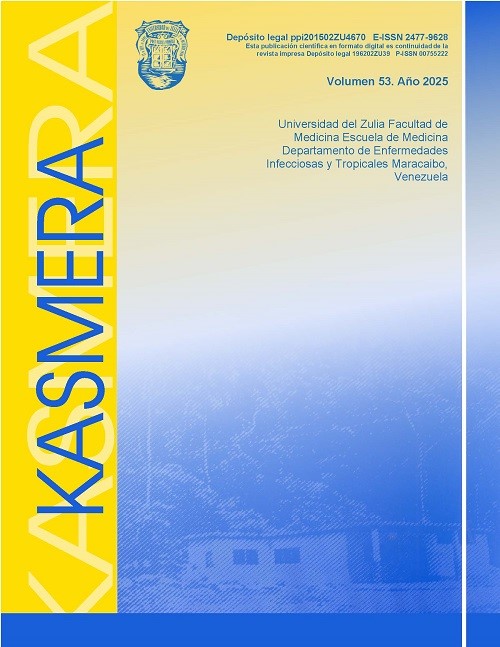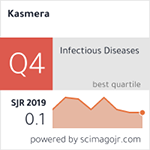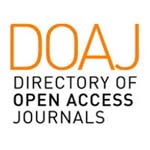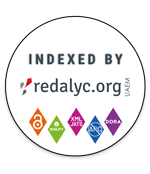Dispelling Snake Bite Myths in Sri Lanka: Ensuring Proper Management and Safety
Abstract
Snake bites remain a significant public health issue in Sri Lanka due to prevalent myths and misconceptions that can hinder effective treatment and increase the risk of complications. This study aimed to debunk common myths and provide accurate information to guide appropriate responses and ensure proper management. A cross-sectional study was conducted in a village in Sri Lanka's North Central region, interviewing heads of households using a pre-designed questionnaire. Key findings revealed several harmful misconceptions. The belief that cutting and sucking the bite site removes venom is ineffective and can introduce bacteria, while applying a tourniquet can restrict blood flow and lead to severe complications. Identifying the snake species is not crucial for antivenom treatment, as most antivenoms are polyvalent. Additionally, the notion that snake charmers can safely handle and cure snake bites is unfounded, and the belief in the effectiveness of certain plants or herbs for neutralizing venom is scientifically unsupported. These findings highlight the urgent need for public health interventions to address snake bite myths and promote evidence-based practices. By disseminating accurate information and improving access to healthcare, the burden of snake bites in Sri Lanka can be significantly reduced
References
Bawaskar HS, Bawaskar PH, Bawaskar PH. The Global Burden of Snake Bite Envenoming. J R Coll Physicians Edinb [Internet]. 2021;51(1):7-8. Disponible en: https://doi.org/10.4997/jrcpe.2021.102. DOI: 10.4997/jrcpe.2021.102 PMID 33877125
Kasturiratne A, Pathmeswaran A, Wickremasinghe AR, Jayamanne SF, Dawson A, Isbister GK, et al. The socio-economic burden of snakebite in Sri Lanka. PLoS Negl Trop Dis [Internet]. 2017;11(7):e0005647. Disponible en: https://journals.plos.org/plosntds/article?id=10.1371/journal.pntd.0005647 DOI: 10.1371/journal.pntd.0005647 PMID 28683119 PMCID PMC5500261
Whitehall JS, Yarlini Mrs, Arunthathy Mrs, Varan Mr, Kaanthan ;r, Isaivanan Mr, et al. Snake bites in north east Sri Lanka. Rural Remote Health [Internet]. 2007;7(4):751. Disponible en: https://www.rrh.org.au/journal/article/751 PMID 18081448
Faleel RA, Jayawardena UA. Progression of potential etiologies of the chronic kidney disease of unknown etiology in Sri Lanka. J Environ Sci Heal Part C, Toxicol Carcinog [Internet]. 2020;38(4):362-83. Disponible en: https://www.tandfonline.com/doi/full/10.1080/26896583.2020.1852012 DOI: 10.1080/26896583.2020.1852012 PMID 33356855
Silva A, Hlusicka J, Siribaddana N, Waiddyanatha S, Pilapitiya S, Weerawansa P, et al. Time delays in treatment of snakebite patients in rural Sri Lanka and the need for rapid diagnostic tests. PLoS Negl Trop Dis [Internet]. 2020;14(11):e0008914. Disponible en: https://journals.plos.org/plosntds/article?id=10.1371/journal.pntd.0008914 DOI: 10.1371/journal.pntd.0008914 PMID 33253208 PMCID PMC7728389
Gutiérrez JM, Maduwage K, Iliyasu G, Habib A. Snakebite envenoming in different national contexts: Costa Rica, Sri Lanka, and Nigeria. Toxicon X [Internet]. 2021;9-10:100066. Disponible en: https://www.sciencedirect.com/science/article/pii/S2590171021000023 DOI 10.1016/j.toxcx.2021.100066 PMID 34124644 PMCID PMC8175406
Kumari MG and Jayasinghe JM. A comparative study of Ayurveda and traditional treatment (Vedda community) modalities of snake bite in Sri Lanka. Young Ayurveda Researchers' and Innovators' Symposium (YARIS–2019), Institutional Research Committee, Gampaha Wickramarachchi Ayurveda Institute, University of Kelaniya, Yakkala. 2019
Karunarathna S, Poyarkov NA, Amarasinghe C, Surasinghe T, Bushuev A V., Madawala M, et al. New Species of the Genus Ceratophora Gray, 1835 (Reptilia: Agamidae) From a Lowland Rainforest in Sri Lanka, With Insights on Rostral Appendage Evolution in Sri Lankan Agamid Lizards. Amphib Reptil Conserv [Internet]. 2020;14(3):103-26. Disponible en: https://amphibian-reptile-conservation.org/pdfs/Volume/Vol_14_no_3/ARC_14_3_[Taxonomy_Section]_103-126_e259.pdf
Waiddyanatha S, Silva A, Weerakoon K, Siribaddana S, Isbister GK. Does snake envenoming cause chronic kidney disease? A cohort study in rural Sri Lanka. Clin Toxicol (Phila) [Internet]. 2023;61(1):47-55. Disponible en: https://www.tandfonline.com/doi/10.1080/15563650.2022.2147843?url_ver=Z39.88-2003&rfr_id=ori:rid:crossref.org&rfr_dat=cr_pub%20%200pubmed DOI: 10.1080/15563650.2022.2147843 PMID 36440905
Waiddyanatha S, Silva A, Weerakoon K, Siribaddana S, Isbister GK. Long-term health effects perceived by snakebite patients in rural Sri Lanka: A cohort study. PLoS Negl Trop Dis [Internet]. 2022;16(9):e0010723. Disponible en: https://doi.org/10.1371/journal.pntd.0010723 DOI: 10.1371/journal.pntd.0010723 PMID 36048902 PMCID PMC9473613
Silva A, Marikar F, Murugananthan A, Agampodi S. Awareness and perceptions on prevention, first aid and treatment of snakebites among Sri Lankan farmers: a knowledge practice mismatch? J Occup Med Toxicol [Internet]. 2014;9(1):20. Disponible en: https://doi.org/10.1186/1745-6673-9-20 DOI: 10.1186/1745-6673-9-20 PMID 24847375 PMCID PMC4026859
Darshani S, Gnanathasan A, Arambepola C, Chang T. Knowledge on prevention, diagnosis and treatment of snakebite envenoming among doctors in snakebite-dense regions in Sri Lanka. Trans R Soc Trop Med Hyg [Internet]. 2021;115(9):984-91. Disponible en: https://academic.oup.com/trstmh/article-abstract/115/9/984/6330155?redirectedFrom=fulltext&login=false DOI: 10.1093/trstmh/trab112 PMID 34323280
Shahmy S, Kularatne SAM, Gawarammana IB, Rathnayake SS, Dawson AH. Compliance with national snakebite treatment guidelines in rural Sri Lankan hospitals: a cluster randomized controlled trial of a brief educational intervention. BMC Med Educ [Internet]. 2023;23(1):390. Disponible en: https://bmcmededuc.biomedcentral.com/articles/10.1186/s12909-023-04375-1 DOI: 10.1186/s12909-023-04375-1 PMID 37245040 PMCID PMC10225084
Thalgaspitiya S, Isbister G, Ukuwela K, Sarathchandra C, Senanayake H, Lokunarangoda N, et al. Bites by snakes of lesser medical importance in a cohort of snakebite patients from rural Sri Lanka. Toxicon [Internet]. 2020;187:105-10. Disponible en: https://www.sciencedirect.com/science/article/pii/S0041010120303743 DOI: 10.1016/j.toxicon.2020.08.025 PMID 32891665
Nann S. How beliefs in traditional healers impact on the use of allopathic medicine: In the case of indigenous snakebite in Eswatini. PLoS Negl Trop Dis [Internet]. 2021;15(9):e0009731. Disponible en: https://journals.plos.org/plosntds/article?id=10.1371/journal.pntd.0009731 DOI 10.1371/journal.pntd.0009731 PMID 34499648 PMCID PMC8428564
Marikar F. Solution for the Neglected Problem of Snake Bite Envenoming in Sri Lanka. MOJ Toxicol [Internet]. 2015;1(2):40-1. Disponible en: https://medcraveonline.com/MOJT/solution-for-the-neglected-problem-of-snake-bite-envenoming-in-sri-lanka.html DOI 10.15406/mojt.2015.01.00006
Chippaux J-P. Epidemiology of snakebites in Europe: a systematic review of the literature. Toxicon [Internet]. 2012;59(1):86-99. Disponible en: https://www.sciencedirect.com/science/article/abs/pii/S0041010111003229?via%3Dihub DOI 10.1016/j.toxicon.2011.10.008 PMID 22056768
Cheap, innovative snake venom treatments could save lives [Internet]. Science News. 2020. Disponible en: https://www.sciencenews.org/article/snake-bite-venom-cheap-innovative-treatments-save-thousands-victims
Mwangi VI, Mumo RM, Nyachieo A, Onkoba N. Herbal medicine in the treatment of poverty associated parasitic diseases: A case of sub-Saharan Africa. J Herb Med [Internet]. 2017;10:1-7. Disponible en: https://www.sciencedirect.com/science/article/pii/S2210803317300088 DOI: 10.1016/j.hermed.2017.03.002
Gómez-Betancur I, Gogineni V, Salazar-Ospina A, León F. Perspective on the Therapeutics of Anti-Snake Venom. Molecules [Internet]. 2019;24(18). Disponible en: https://www.mdpi.com/1420-3049/24/18/3276 DOI: 10.3390/molecules24183276 PMID 31505752 PMCID PMC6767026
Chippaux JP, Stock RP, Massougbodji A. Antivenom Safety and Tolerance for the Strategy of Snake Envenomation Management. En: Gopalakrishnakone P, Inagaki H, Mukherjee AK, Rahmy TR, Vogel C-W, editores. Snake Venoms [Internet]. Dordrecht: Springer Netherlands; 2015. p. 1-16. Disponible en: https://doi.org/10.1007/978-94-007-6648-8_25-1 DOI: 10.1007/978-94-007-6648-8_25-1
Azam AWM, Jayasuriya KMGG, Musthafa MM, Marikar FMMT. Sri Lanka is a hot spot for illegal transnational trading of biodiversity and wildlife materials from South Asian region. J Transp Secur [Internet]. 2016;9(1):71-85. Disponible en: https://doi.org/10.1007/s12198-016-0167-0 DOI: 10.1007/s12198-016-0167-0
Gunnels D, Gunnels MD. Snakebite poisoning: treatment myths and facts. J Emerg Nurs [Internet]. 2003;29(1):80-2. Disponible en: https://www.jenonline.org/article/S0099-1767(02)69909-X/abstract DOI: 10.1067/men.2003.6 PMID 12556842
Ariaratnam CA, Sheriff MHR, Arambepola C, Theakston RDG, Warrell DA. Syndromic approach to treatment of snake bite in Sri Lanka based on results of a prospective national hospital-based survey of patients envenomed by identified snakes. Am J Trop Med Hyg [Internet]. 2009;81(4):725-31. Disponible en: https://www.ajtmh.org/view/journals/tpmd/81/4/article-p725.xml DOI: 10.4269/ajtmh.2009.09-0225 PMID 19815895
Maduwage KP, Gawarammana IB, Gutiérrez JM, Kottege C, Dayaratne R, Premawardena NP, et al. Enzyme immunoassays for detection and quantification of venoms of Sri Lankan snakes: Application in the clinical setting. PLoS Negl Trop Dis [Internet]. 2020;14(10):e0008668. Disponible en: https://journals.plos.org/plosntds/article?id=10.1371/journal.pntd.0008668 DOI: 10.1371/journal.pntd.0008668 PMID 33017411 PMCID PMC7561112
Patra A, Kalita B, Khadilkar M V, Salvi NC, Shelke P V, Mukherjee AK. Assessment of quality and pre-clinical efficacy of a newly developed polyvalent antivenom against the medically important snakes of Sri Lanka. Sci Rep [Internet]. 2021;11(1):18238. Disponible en: https://doi.org/10.1038/s41598-021-97501-2 DOI: 10.1038/s41598-021-97501-2 PMID 34521877 PMCID PMC8440654
Copyright (c) 2025 Faiz Marikar, Prasanna Herath, Shyama Banneheka, Malinda Amarakoon, Sashini Bandara

This work is licensed under a Creative Commons Attribution-NonCommercial-ShareAlike 4.0 International License.
Kasmera journal is registered under a Creative Commons an Attribution-NonCommercial-ShareAlike 4.0 International (CC BY-NC-SA 4.0), available at: https://creativecommons.org/licenses/by-nc-sa/4.0/deed.en; which guarantees the freedom to share-copy and redistribute the material in any medium or format and adapt-remix, transform and build from the material, provided that the name of the authors, the Department of Infectious and Tropical Diseases, Zulia´s University and Kasmera Journal, you must also provide a link to the original document and indicate if changes have been made.
The Department of Infectious and Tropical Diseases, University of Zulia and Kasmera Journal do not retain the rights to published manuscript and the contents are the sole responsibility of the authors, who retain their moral, intellectual, privacy and publicity rights. The guarantee on the intervention of the manuscript (revision, correction of style, translation, layout) and its subsequent dissemination is granted through a license of use and not through a transfer of rights, which represents the Kasmera Journal and Department Infectious Diseases, University of Zulia are exempt from any liability that may arise from ethical misconduct by the authors.
Kasmera is considered a green SHERPA/RoMEO journal, that is, it allows self-archiving of both the pre-print (draft of a manuscript) and the post-print (the corrected and peer-reviewed version) and even the final version (layout as it will be published in the journal) both in personal repositories and in institutional and databases.











_pequeño1.png)

_pequeña.png)









_pequeña.png)




_pequeña.jpg)






